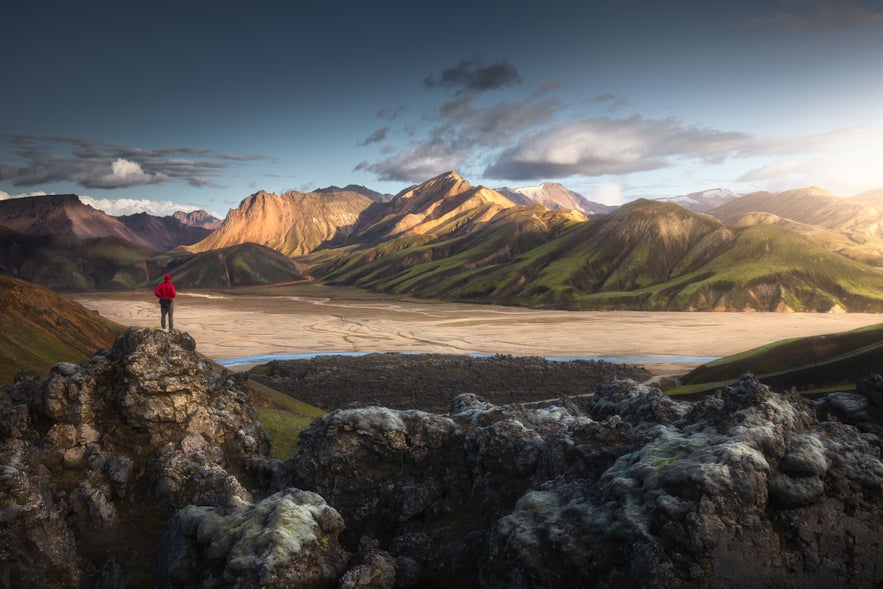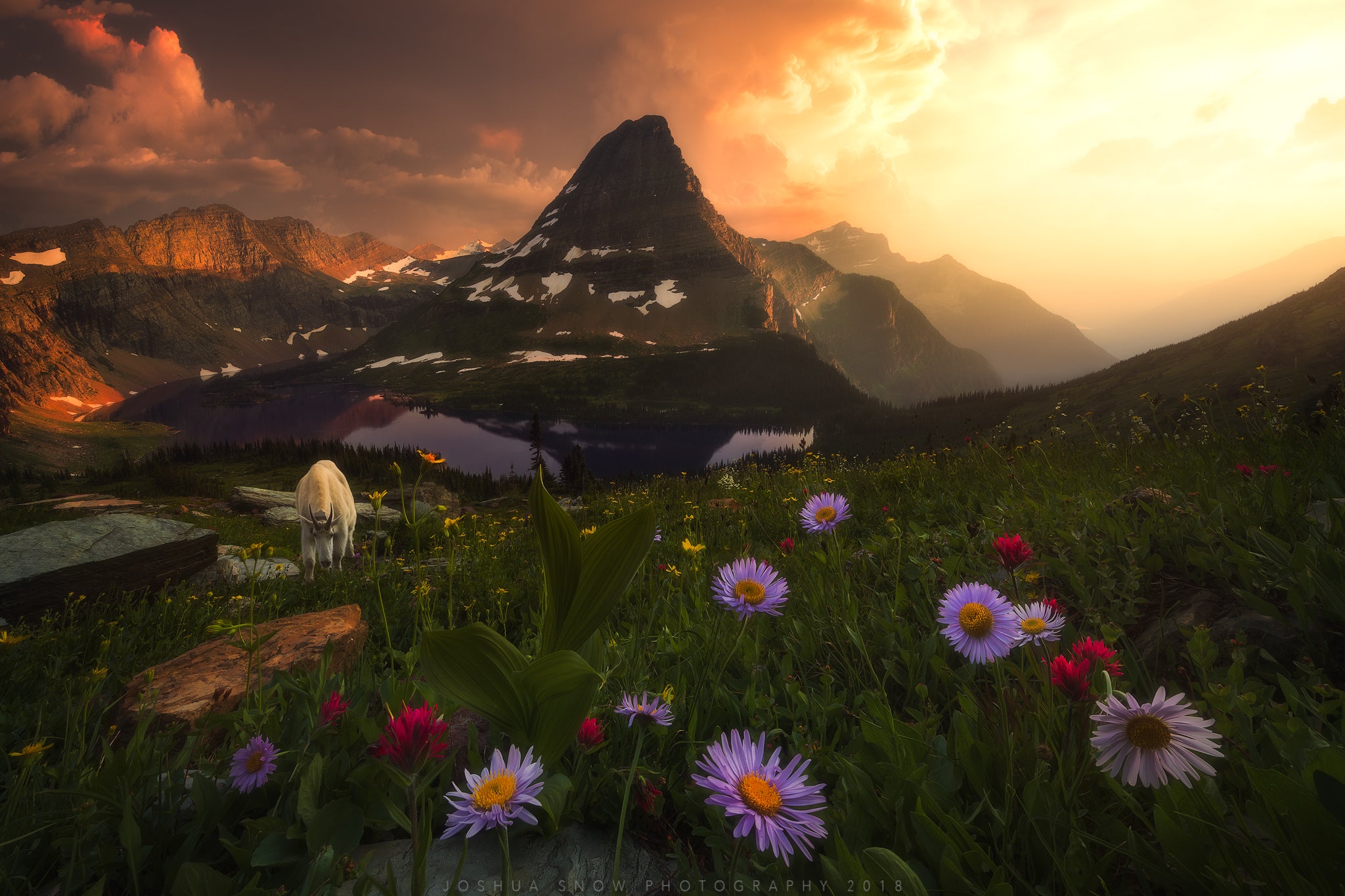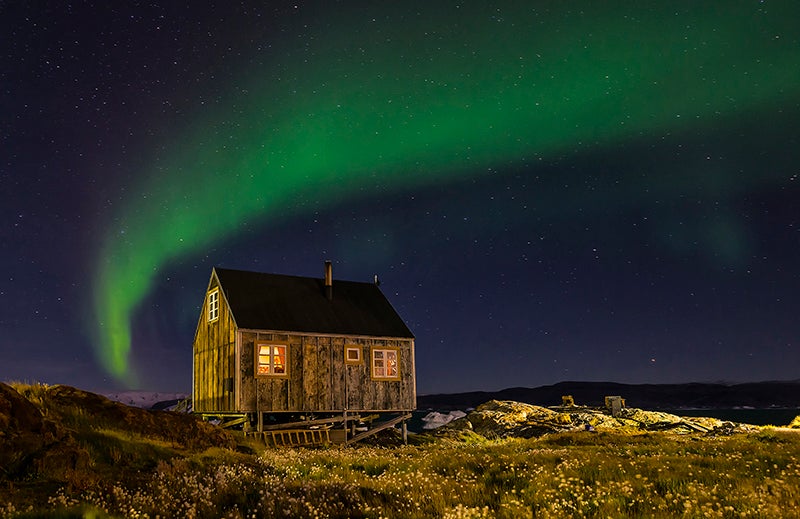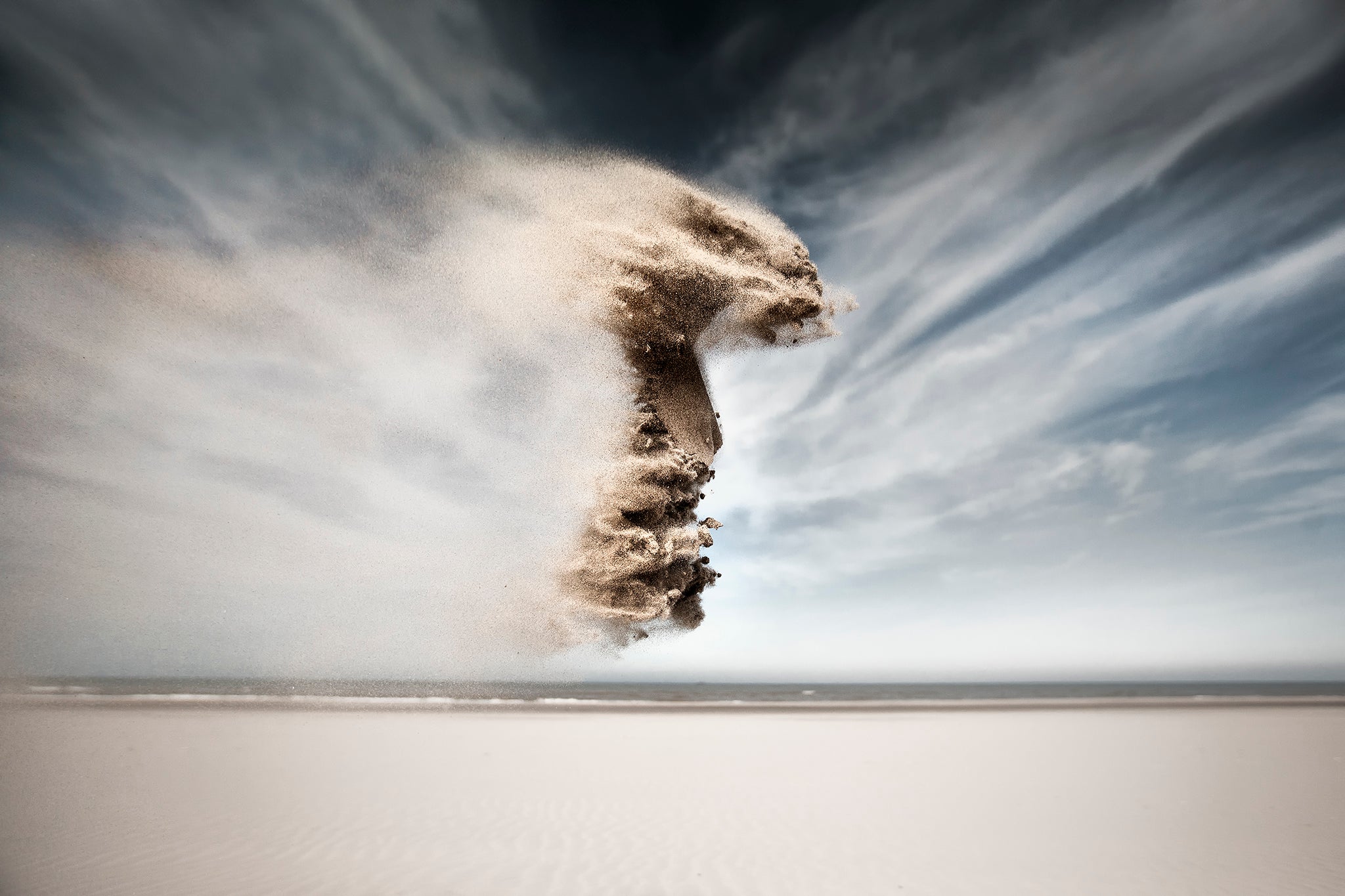
Imagine living in one of the most beautiful places in the world. Having grown up at the foot of the Rocky Mountains in the USA, landscape photographer Ben Strauss has learned to channel his passion for the outdoors into a burgeoning photography career.
Currently pursuing a Masters of Science degree in Mechanical Engineering, this avid explorer still finds the time for backpacking, mountain biking, travelling and immersing himself in nature with his family. This month, we had a chat with Ben about how he got to be where he is today, what draws him to photographing landscapes, his workflow, as well as the best advice that he has for people just starting out in photography.
 Ben Strauss is a landscape photographer from the USA. Photo by: 'Ben Strauss'.
Ben Strauss is a landscape photographer from the USA. Photo by: 'Ben Strauss'.
- Check out these Photographer Interviews
- Discover these Russia Photo Workshops
- Get your Complete Guide to Photography at Hraunfossar Waterfall in Iceland
Hello Ben, thanks for joining us! For those who are unfamiliar with your work, tell us a bit about your background and who you are. Where are you from and how did you first get into photography? Do you have any formal training or are you self-taught?
I grew up in the town of Loveland, Colorado, right along the front range of the Rocky Mountains. I began my journey into the creative and expressive world of photography nearly three years ago. Already being an outdoor enthusiast (backpacker and mountain biker), I was immediately hooked on landscape and nature photography.
Previously, I remember having a somewhat negative perception about landscape photographers, in that they spent too much time behind their lenses and would miss out on what was happening in front of them. From my personal experience in the last few years, this couldn't be further from the truth.
 Nature photography has changed Ben's perspective of the world. Photo by: 'Ben Strauss'.
Nature photography has changed Ben's perspective of the world. Photo by: 'Ben Strauss'.
At the risk of sounding cliche, nature photography has changed my perspective of the world around me. I feel like I've acquired a higher level of attention to detail in my surroundings and there is something so thrilling about hunting for that perfect composition. I've also found it really slows you down and for me, it is a bit of a grounding mechanism.
Before photography, I don't ever remember spending over an hour observing how the continually changing sunlight alters the dynamics of one single landscape. There is so much unexpected detail to be found in beautiful places and so much beauty to be found in unexpected places. So in the end, my initial perception of photographers was completely backwards.
 Ben has spent countless hours perfecting his craft. Photo by: 'Ben Strauss'.
Ben has spent countless hours perfecting his craft. Photo by: 'Ben Strauss'.
All credit has to go to my mother for not only the inspiration to get into photography but for passing on her previous Canon Rebel to me. Ever since I can remember, she always had a camera close by to document all of our travels and adventures. I was definitely that son who said something like "mom, ughhh, not another picture!" at least a thousand times while growing up. Now looking back, I am so grateful for her having taken all of these photographic memories. These days, we enjoy going on our yearly photography trips to amazing places around the beautiful Western United States and sharing our common love for nature.
Since becoming hooked on photography, I’ve spent countless hours perfecting my craft through various self-taught approaches. Honestly, one of the most impactful and powerful resources in today’s day-and-age is YouTube! There are so many amazing channels in which you can learn every aspect of photography, from in the field camera techniques to post processing. I’ve actually started my own YouTube channel as my way of giving back to the photography society. I regularly post both in-camera and post processing tutorial videos, all free content! In addition to exploring the depths of YouTube, I learned a lot from the start-to-finish tutorial videos I purchased from a few of my favourite photographers. Tutorial videos go a long way in learning the art of landscape photography.
What kind of struggles did you face along the way to get to where you are today? What is currently the most challenging thing about being a photographer?
I would have to say the most challenging aspect to getting where I am today is patience! I feel like this goes for pretty much any profession or skill set, in which thousands of hours are required to fully develop your craft. If you’re anything like myself, I always prefer instant results and gratification. Learning to accept the fact that becoming a good landscape photographer takes a large amount of time was an experience full of ups and downs. I still feel I have so much room to grow and the day I feel I’ve “made” it is the day I stop progressing as a photographer.
 Patience is rewarded in photography. Photo by: 'Ben Strauss'.
Patience is rewarded in photography. Photo by: 'Ben Strauss'.
Another huge battle I face on a regular basis while growing (or trying to grow) as an artist is the expectation that progress is linear. It’s not! I can’t begin to recall the number of times I felt like I was actually getting worse at post processing, despite my attempts in learning new techniques. It takes a lot of trial and error to develop a style that meets your expectations. Also, not every photo can be a winner either. Sometimes, the light doesn’t work out, or the landscape doesn’t offer a stunning composition. I still struggle on a monthly basis with this concept! Those who are patient will be rewarded with hard work and perseverance.
These days, my biggest challenge with landscape photography is surprisingly not much different than the challenges I met while getting to where I am today. Why? Because I still feel I am on the path towards reaching a fuller potential.
 Ben enjoys seeking out things that bring him joy in landscape photography. Photo by: 'Ben Strauss'.
Ben enjoys seeking out things that bring him joy in landscape photography. Photo by: 'Ben Strauss'.
I have learned to better accept a non-linear path of progression with photography, however expectations of constant improvement still exist, only in other areas. Where I once spent a lot of energy and concern in my photography, I now spend in the growth of my photography business. How many prints did I sell this month? What about my tutorial sales? Should I be putting out more YouTube videos? Am I becoming “old news” as a photographer? These questions definitely cross through my mind on a regular basis.
It is quite humbling to see the amount of new and amazingly skilled photographers popping up on the scene. I have a feeling it will only become more difficult to make a name for oneself as we move towards the future of photography in general. For now, all I can do is continue seeking out what brings me joy in landscape photography. Don’t lose touch with your roots, everybody!
- See also: Interview with Hans Strand
What draws you to capturing landscapes and nature? What are your favourite types of scenes to photograph?
Nature is the definition of balance and equilibrium on our beautiful planet. Next time you find yourself surrounded by nothing but nature, remember that if all human activity were to cease today, you are looking at the state everything would eventually return to. Everything is exactly the way it should be, nothing less and nothing more. I find this extremely thought-provoking and somewhat emotionally stimulating, hence my draw towards the natural landscapes.
 According to Ben, framing and leading lines are the key to a great composition. Photo by: 'Ben Strauss'.
According to Ben, framing and leading lines are the key to a great composition. Photo by: 'Ben Strauss'.
I think photographing nature came from an excuse to spend even more time outdoors, with the bonus of sharing the beauty with those who are interested in seeing it. While there are many downsides to heavy tourism in many of our natural areas, I also see a flip-side to this coin. The more we get people to appreciate and enjoy the outdoors, the stronger personal connection they will develop for preserving it in the long run.
I would have to say my favourite types of landscapes to photograph are those full of mountains, rivers and lakes. The more jagged the peaks, the better. I’m a sucker for the classic river leading to epic mountain in the background kind of composition. I also thoroughly enjoy seeking out natural frames in a landscape. I look for areas in which I can place my camera to give the illusion I’m shooting from within a cave. Just because I may not be able to fit doesn’t mean there isn’t a photograph to be had! I believe strong framing is one of the key aspects to a great image; that and diagonal leading lines.
What makes photographing the American west so special? Is it the diversity of landscapes, the weather or something else?
We sure are spoiled with the wide variety of landscapes in the American Southwest, that is for sure. Just within the two states of Colorado and Utah, you can photograph epic mountainous landscapes, high elevation tundra, lush forests, green grass meadows, martian-like landscapes, vast canyons, desert landscapes, geothermal activity and much more! I think this is why I am so reluctant to move anywhere else.
Can you tell us about a few of your favourite locations for photography in Colorado?
The answer to this question seems to change a lot over time. For a while, it was on top of Trail Ridge Road in Rocky Mountain National Park. During the month of July, this 12000 ft tundra turns all green and almost reminds me of certain aspects in Iceland. Also, from up here you get an amazing 360 degree view of the majestic peaks that make up the northern part of the Colorado Rockies. The compositional options up here are aplenty!
More recently, I think my favourite place to photograph has to be the Glacier Gorge area in Rocky Mountain National Park. While the hikes can be a bit longer and strenuous, the rewards are totally worth it. Pure, raw mountainscapes await those who put in the effort to explore this area. Luckily, I live quite close to the gates of this national park, probably one of the reasons why it is home to some of my favourite places to photograph.
 Ben enjoys exploring and photographing the world around him. Photo by: 'Ben Strauss'.
Ben enjoys exploring and photographing the world around him. Photo by: 'Ben Strauss'.
What is one place you haven’t photographed yet which you would like to visit in the near future?
This is a tough question! I have my eye on a few places, the first being Norway and the second being the mountains of Peru. From the images I have seen from fellow photographers of both locations, the views are absolutely epic and on an entirely different level. I one day hope to do some backpacking in both countries.
- See also: Travel Photography Explained
Can you tell us a bit about the planning and preparation that is needed before you go out on a photography trip?
Beyond selecting a geographic region, I don’t do much planning when going on my photographic trips. I have always had most success in capturing my favourite images when I walk out my front door without predetermined expectations.
I really enjoy the spontaneity of exploring an area as if I just discovered it existed and have had no prior knowledge of what I might find there. Now with that being said, there are definitely times that I have done some Google Earth exploration to get an idea of what vantage points may be best to hike to. I actually did this quite a bit when planning shoots in Iceland’s Highlands.
 Ben enjoys the spontaneity of exploration. Photo by: 'Ben Strauss'.
Ben enjoys the spontaneity of exploration. Photo by: 'Ben Strauss'.
For places more local, I take advantage of leisurely day hikes with my wife Abby to scout future shoots that I may return to during sunset or sunrise. Apart from compositional planning, or lack thereof, I prepare for my photographic trips no differently than I would a backpacking trip. Survival comes before photography haha!
Do you think talent for photography is something a person is born with?
No way! I think a certain level of artistic intelligence is something some people develop early on in their childhood, leading to a more organic understanding of photography once they are adults. However, I am a firm believer that anyone who is willing to put in the work can become as great of a photographer as they desire.
How would you describe the power of landscape photography and what influence does it have upon nature and the world?
There is no arguing that landscape photography is a very powerful entity. Some of its powers are for good, but unfortunately, much of it has had an unforeseen negative impact. I believe much of this has to do with the explosion of popularity with social media in the last decade. While this has allowed us photographers to share our work with the world, which is awesome, it has also led to heavy tourism in much of the world's most beautiful places. While it is so great to see that so many people have an interest in our natural world, there are many who do not understand how to respect this world. This leads to an unfortunate amount of destructive outcomes for these once untouched areas.
 Landscape photography is a powerful entity. Photo by: 'Ben Strauss'.
Landscape photography is a powerful entity. Photo by: 'Ben Strauss'.
Of course, being a photographer myself, I like to focus on the positives of landscape photography. Being able to capture the amazing beauty of our planet and share it with those who seek it has maintained humanity’s interest in sustaining our natural world. I have high hopes that while there are those who decide not to respect the places they visit, the majority will walk away with a greater appreciation for nature and an increased desire to protect the fragile place we call home.
- See also: Interview with Alexandre Deschaumes
What camera gear do you shoot with? Do you use different equipment when photographing at night?
I have been a loyal Canon user since the beginning. I started with a Canon Rebel T4i and then somewhat recently, upgraded to the 5D Mark IV. I love this camera, especially the hardy and weather resistant body.
As for my collection of lenses, it is actually quite small. I primarily shoot with the Canon L-Series 16-35mm and 24-70mm lenses. Once in a while, I will take out my Tamron 70-400mm if I need to capture something far into the distance. I don’t do too much night time photography but when I do, I find my 16-35mm lens works just fine.
What is your workflow for photographing landscapes? What kind of processing yields the best images?
When I am at the scene, I first decide what focal length range will best capture what I am trying to photograph. Once I have my lens selected, I begin my compositional “hunting.” I think it is super important to not set up your tripod too early, as this can act like an anchor for your camera preventing you from exploring all of the available perspectives. Sometimes just a foot of camera placement can make or break a composition. So I highly recommend you refrain from setting up your tripod until you have walked around the camera in hand for a bit and found the perfect spot.
 Ben searches for compositions before setting up his tripod. Photo by: 'Ben Strauss'.
Ben searches for compositions before setting up his tripod. Photo by: 'Ben Strauss'.
At this point, I set up my tripod with the goal of maintaining the camera position I intended. To be honest however, I only use my tripod about 10% of the time. I actually prefer to shoot handheld if the light levels allow for it. I even shoot many of my focus stacked images and exposure bracketed shots handheld! The tripod really only comes out when the light levels require a shutter speed too long for handheld. Like I mentioned before, no tripod equals more compositional freedom.
For post processing, I use a combination of Lightroom and Photoshop. Lightroom is a great way to categorise and catalogue photographs. It also allows me to make adjustments to the RAW photograph before exporting it over to Photoshop, where the bulk of my editing occurs. Photoshop is so powerful for post-processing as it works in layers. I believe the targeted editing is the most powerful approach to editing photographs, and Photoshop is king for this.
How important is post production to you? How long does this process normally take you?
A typical photograph takes me about two to three hours to edit from start to finish, all done in a desktop environment. Because my editing workflow is on the long side, I believe it is very important to take intermittent breaks to step away from my computer screen. This allows my eyes to readjust to the natural light and colours around me, so when I return to editing, I am more likely to see what direction the photograph needs next. Sometimes, we can get desensitised to certain temperatures or colour casts in our photographs that we don’t see unless we step away for a bit. Fresh eyes are good eyes when it comes to processing, in my opinion.
 It takes Ben two to three hours to finish editing a photograph. Photo by: 'Ben Strauss'.
It takes Ben two to three hours to finish editing a photograph. Photo by: 'Ben Strauss'.
I also do a bit of touching up to my photographs on Lightroom mobile before posting to social media, as cellphone screens look a bit different than my calibrated BenQ 4K monitor. I really only make slight temperature and tint adjustments, as well as brightness adjustments with the goal of making my photo look as similar on my phone as it does on my computer screen. In the end however, we can only control the way our photo looks on our own screens, so I don’t obsess about it too much. Everyone has a different viewing experience.
What do you try to communicate with your photography? What is your mission and how do you achieve it?
I am a huge advocate for being as engaged as I can with my social media audience. I think it is important to maintain the idea that I am just a fellow human behind the cellphone screen. There are too many influential photographers who hardly interact, giving the impression they are too good for the average user. No matter how much success someone sees with their craft, they should never see themselves as too good to respond to those who enjoy their work and ultimately made them the success they are.
Apart from being active on social media, I am a part of a few photography chat groups and hubs. I often make an effort to meet up with fellow photographers when I visit places to shoot together. It is always fun meeting new people and regardless how experienced and notable another photographer is, you can always learn something new from them!
 You can always learn something from other photographers. Photo by: 'Ben Strauss'.
You can always learn something from other photographers. Photo by: 'Ben Strauss'.
Are there any other projects that you can tell us about that are in the coming future?
In addition to being a landscape photographer, I also consider myself an educator in this field. I have recently started a YouTube project called QuickStop Photoshop, in which I post regular photo-processing tutorial videos covering a breadth of topics. Please check this out as it is totally free. I am also actively producing start-to-finish editing tutorials available on my website. Aside from this, my only projects are to continue exploring our planet and producing the best content I can for your viewing pleasure.
- See also: Guide to the Aurora Forecast in Iceland
Finally, what is the one thing you wish you had known when you started taking photos? What is the most important advice you can give to amateur photographers who want to improve their photography in-field?
Above all else, I wish I could go back and tell my amateur self that my hard work will pay off. Stop worrying so much about whether you are progressing “enough”, just enjoy the moments and and have fun! Stay eager to learn new things and the success you desire will come.
The most important advice I can give to new photographers is to stay hungry. The day you feel you’ve “made it” is the day you stop growing as an artist and as a photographer. There is no such thing as perfection, so don’t waste your energy worrying about getting there. Where you are at as a photographer right now is exactly where you should be, no more no less. As long as you remain hungry for growth, tomorrow will be a different day and you will be that much better for it. Happy shooting everyone!
For more information on Ben Strauss' work, you can visit his website or find him on YouTube, Facebook and Instagram.
Be inspired by the beauty of nature all around you. Check out our range of international photo tours and photography workshops.












